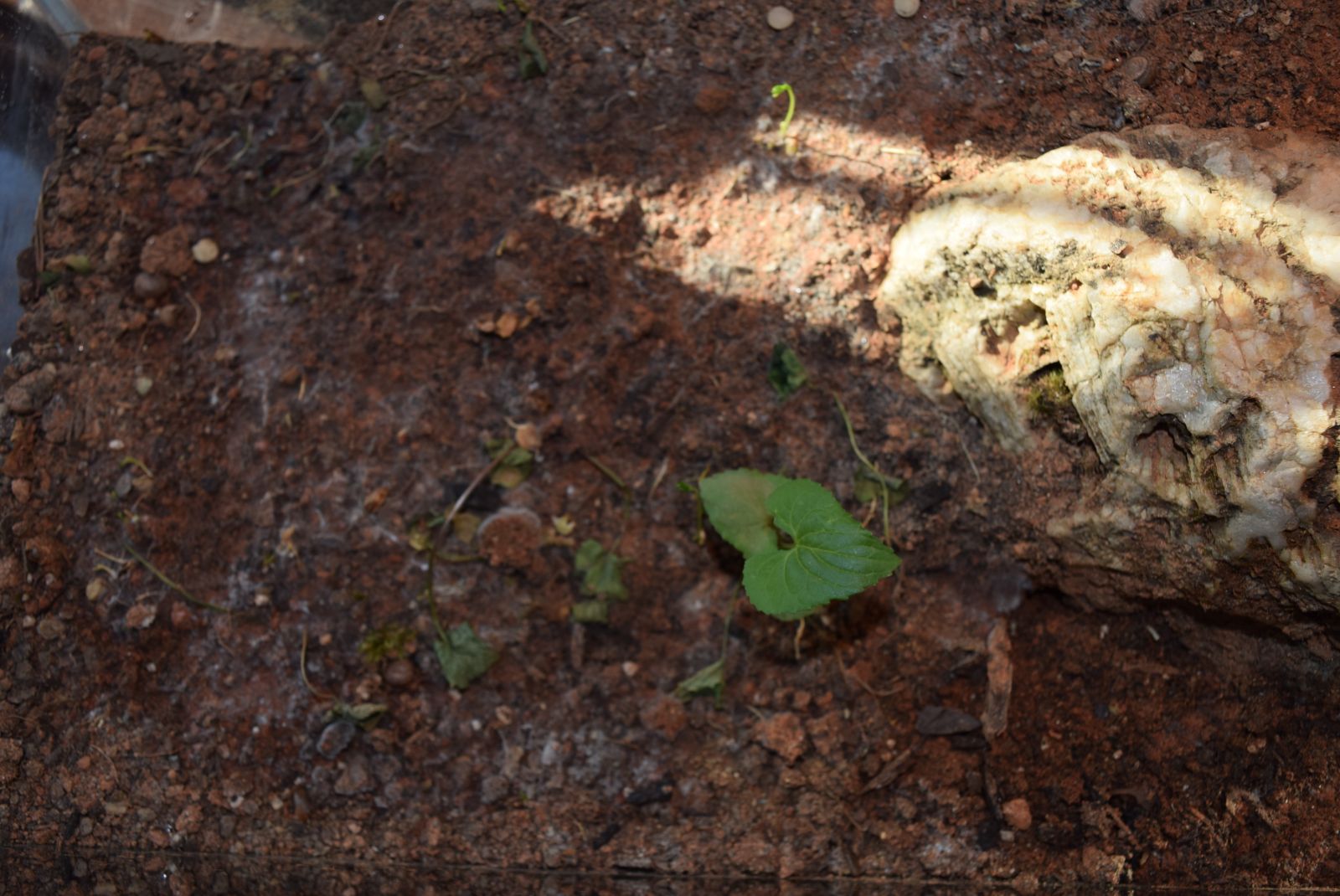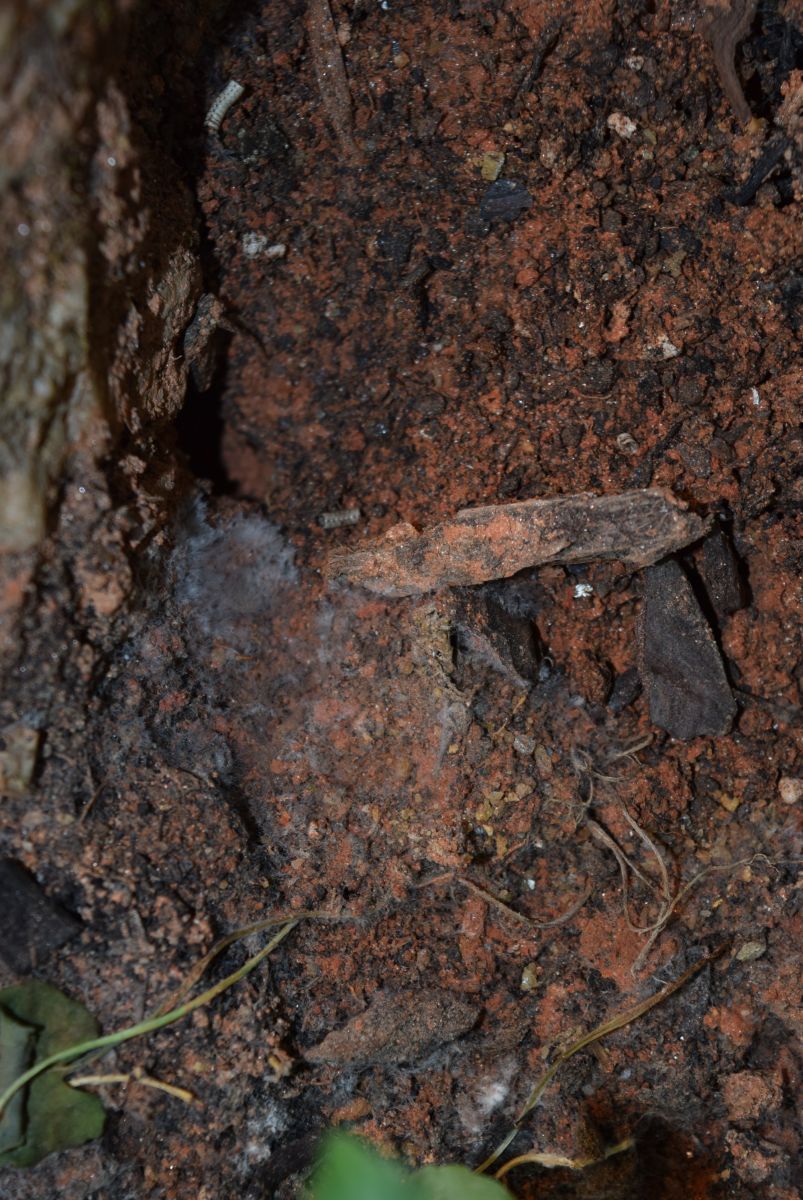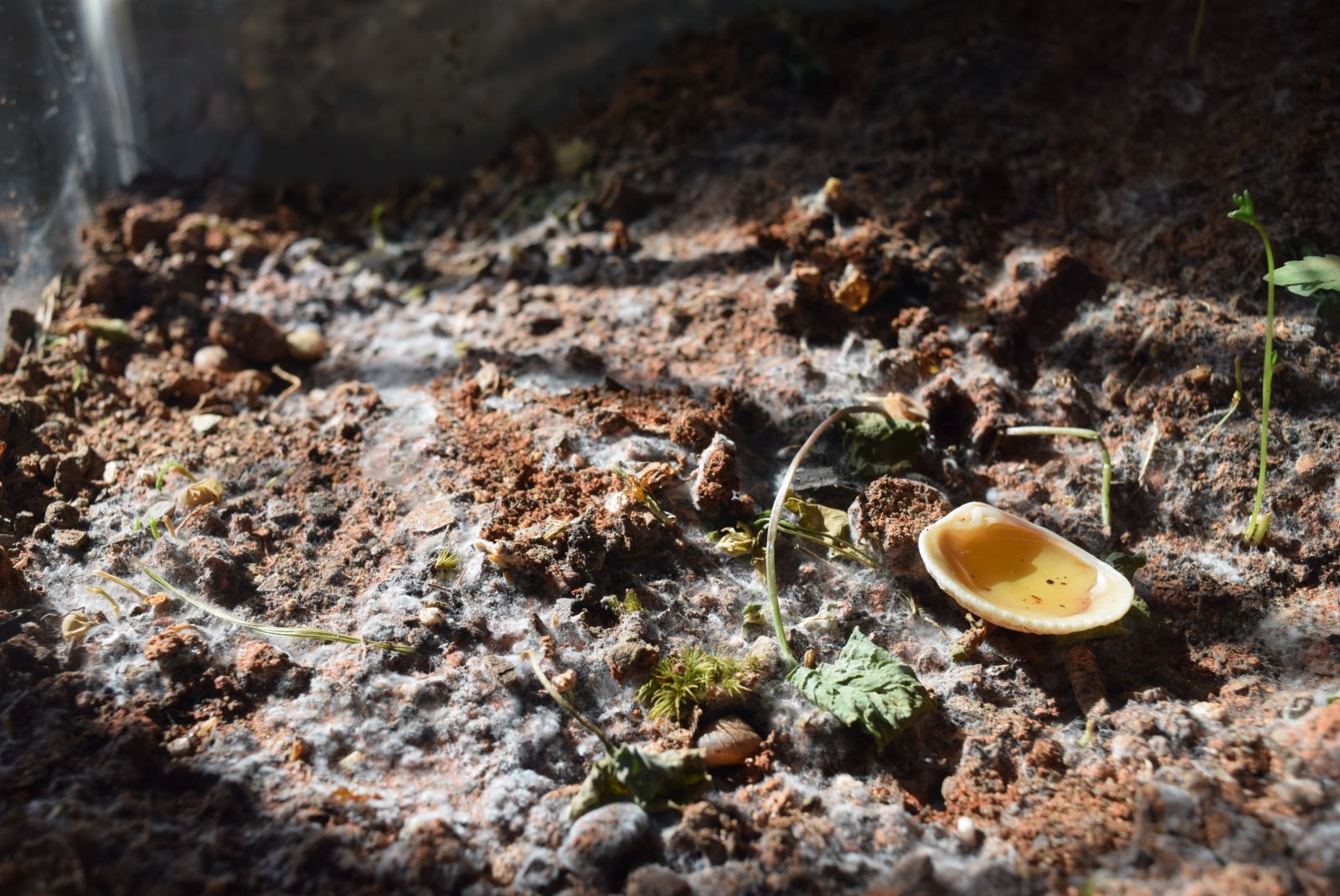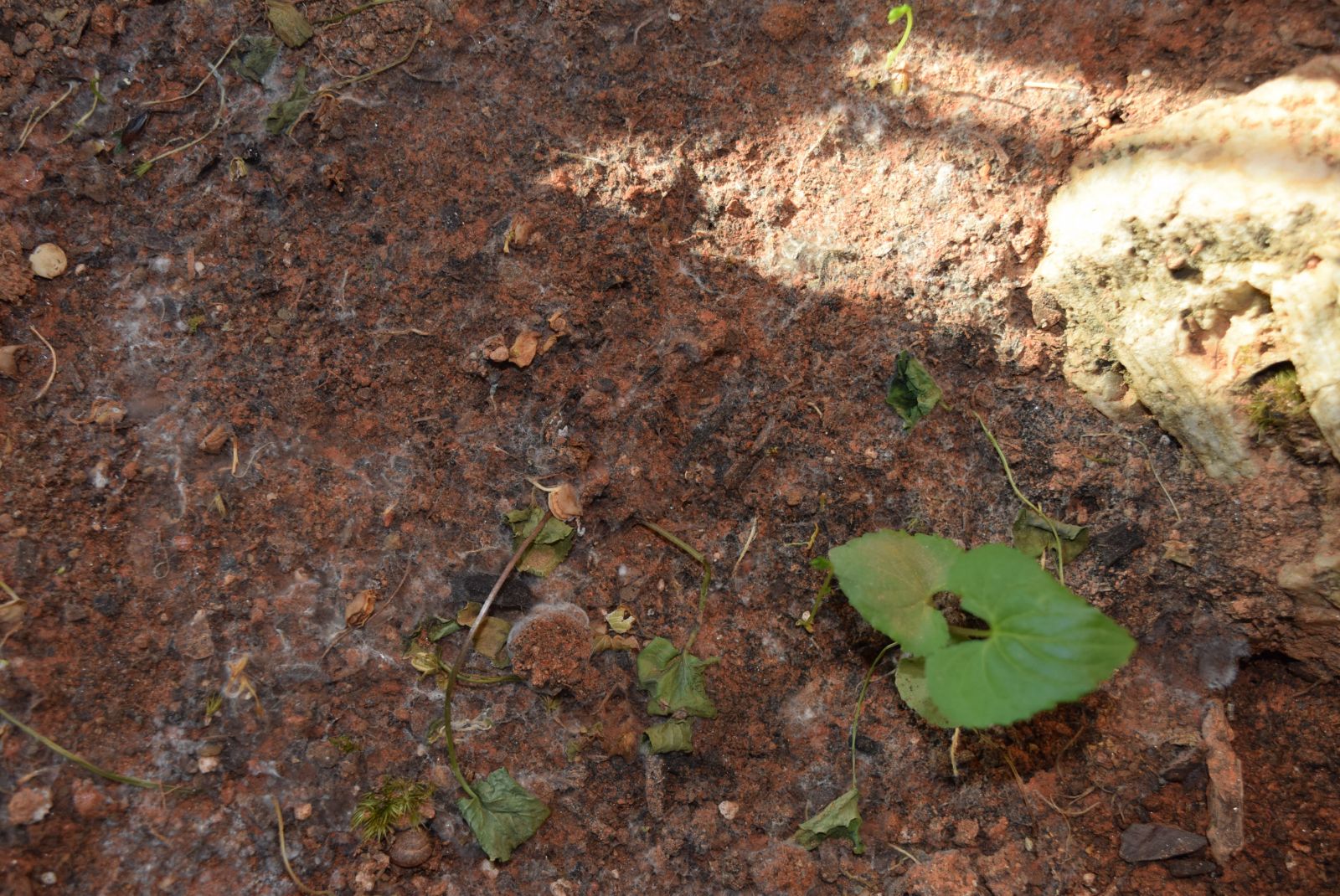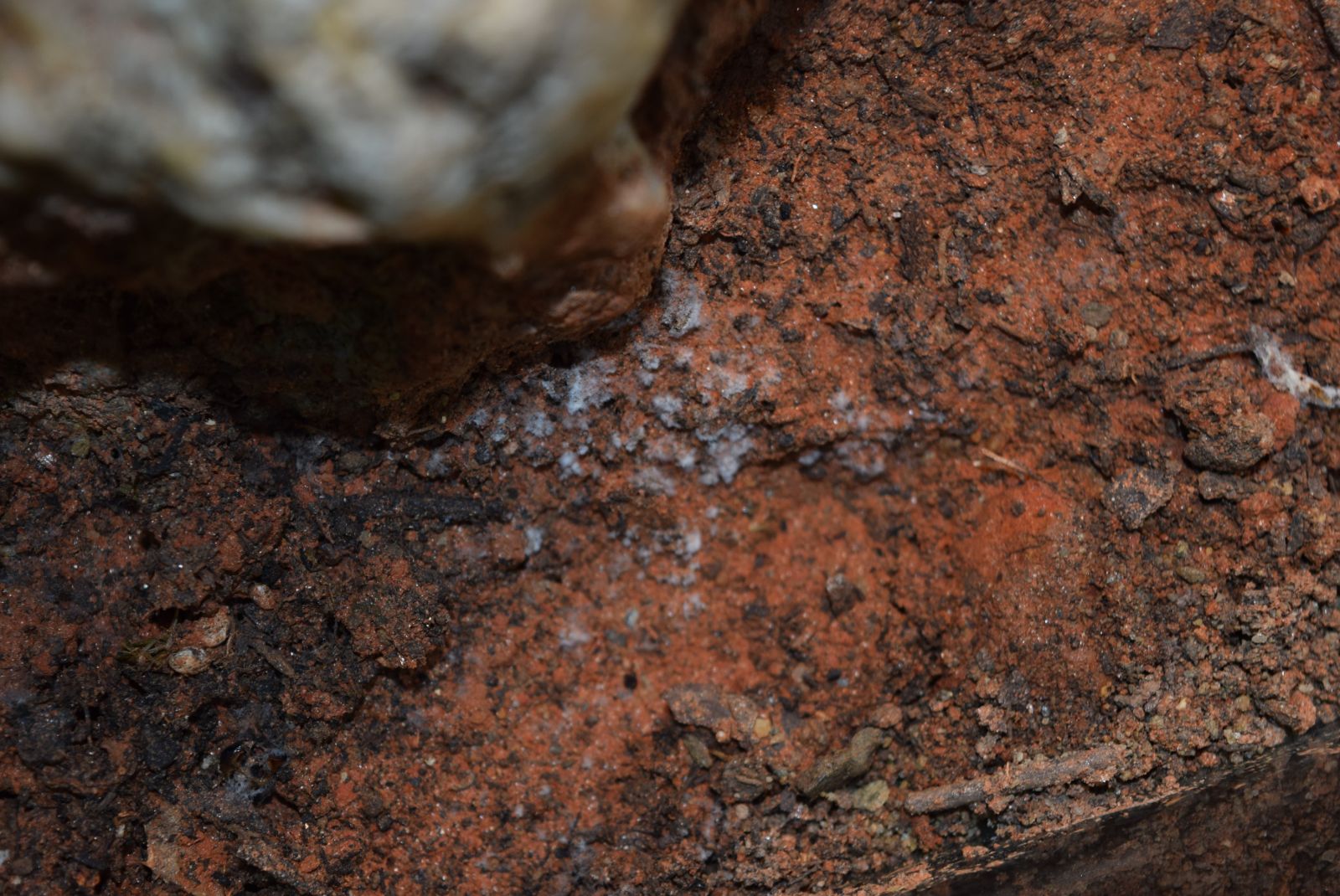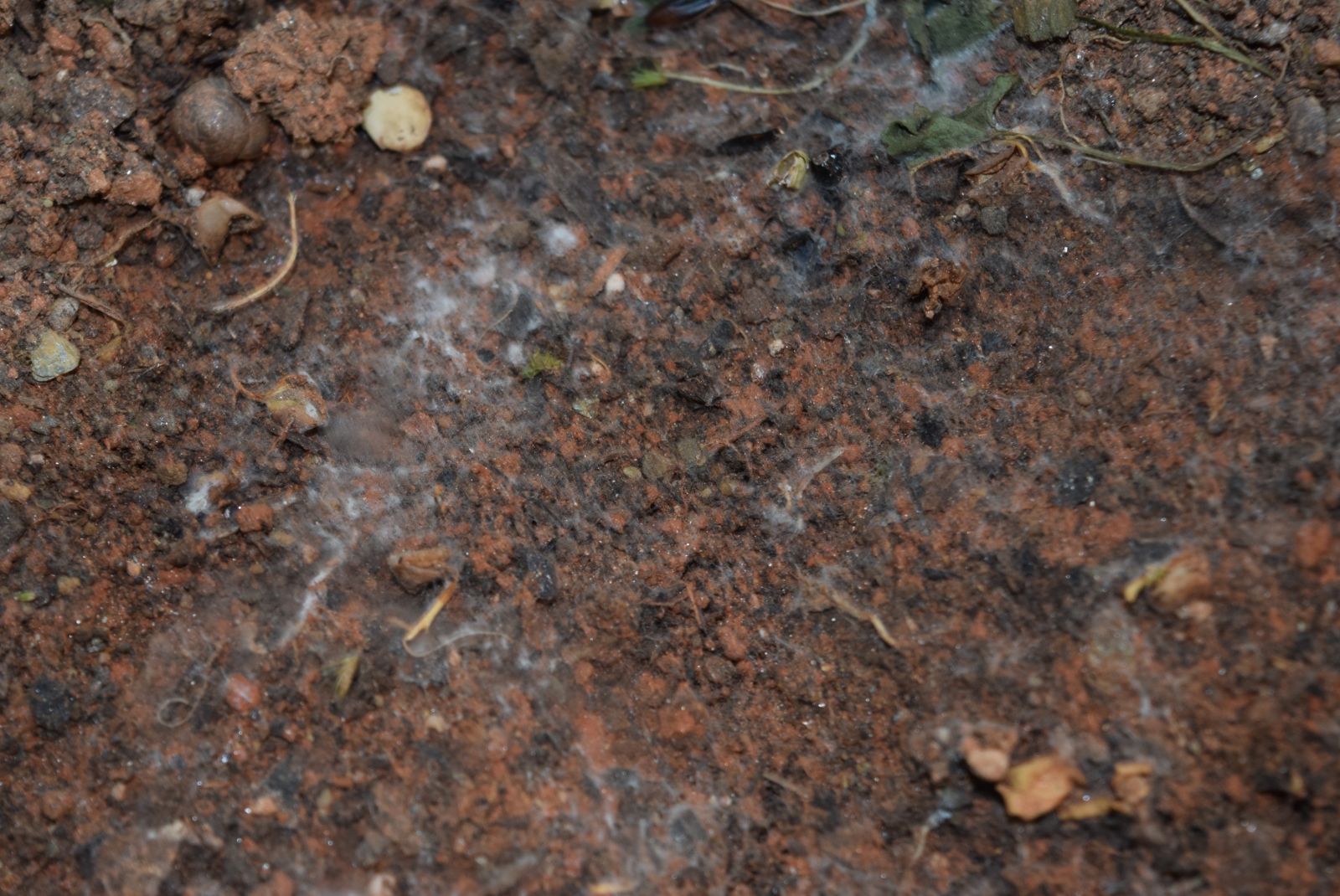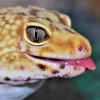Does (or did?) your terrarium have more plants in it? The mold is a decomposing fungus that is eating and breaking down *something.* That could mean they're eating dead ants, woody substrate, spilled food, or the dying/deceased plant matter. So, the goal would be to put in competing organisms that will eat what the fungus is eating, and also organisms that might feed on the fungus. Any idea what exactly this mold is eating, and is there something native you could add that would also want to eat what the mold is eating? Is there anything native you could add that would enjoy eating this mold?
I like to carpet bare soil areas in my terrariums with moss, as the moss generally takes up the surface area the mold or other weeds would want to occupy, and also contributes to "cleaning" the water in the terrarium.
Re drainage: Sand/rocks give moisture someplace to go, and charcoal can help absorb ammonia, nitrites and nitrates. Charcoal also gives "good bacteria" something to cling onto, and that bacteria helps to eat up some of the bad chemicals that can build up in a close environment. If there aren't "good bacteria" colonizing the charcoal, the charcoal eventually becomes totally saturated with toxic chemicals - that's why most fishtank owners will use some filter material from an established tank to help a new tank get established/balanced.
Edit: SerpaDesign has quite a few good terrarium/vivarium videos. These might help! He's not a hugely popular youtuber, so you could even try reaching out and see if you get a response/critique from him.
Thank you so much for your help. yes, the tank used to have a lot of lentil plants in it that I removed(all but the roots). As far as organisms go I've added sringtails(which have already started to multiply it looks like), millipedes, and roly polys. Moss would be a good idea, but I always had trouble keeping them alive and from drying out. The decision I think I've come to now is that I should remove the ants, bake the dirt(something I also wish I had done), and set it back up with a drainage layer. Also, go all out on collecting organisms for the tank.
I really wanted to have a nice long term terrarium, but I feel like I kinda messed up. I don't want to have to fight mold in this tank for as long as I have when I can take the ants out and just start over
But I do have one question. Should I separate the drainage layer from the dirt with some agriculture cloth, I'm not sure that I have any. Is it necessary?
Redoing the entire thing is probably the most efficient way to tackle it. So, if you can coax the colony out, it might be a good idea to start from scratch.
It's a good idea to separate the drainage from the dirt using some kind of barrier, otherwise the dirt drains into the vacant spaces in the drainage layer. In the past, I've used polyester craft felt, because it's what I've had. But, I'm inexperienced in making terrariums that include digging fauna (ex: ants), so I'm not sure what they won't try to dig through. I'm trying my hand at my own "terraricarum" build, but I've yet to introduce ants into it. I used fiberglass window screen and upholstery thread to make a pillow, which I then filled up with activated carbon for fishtanks. Large rocks underneath the pillow, and pea gravel rocks above the pillow. I usually wouldn't enclose the carbon like that, but I don't want ants or other critters moving the carbon around/mixing it with the soil. I also used pea gravel OVER the pillow because they should be too big for the ants to displace, so less likely that ants will dig down to and get stuck in/try to live in/drown in drainage layer.
Then I filled the main area with some compost, an earthworm, potting soil, river silt/sand and some mulch. I'm waiting to see what "weeds" are going to grow out of the soil I added before I start adding my own small plants to finish it off.
I'm new to antkeeping, so I don't have an ant colony to move into this setup. I made it VERY far in advance of ever putting ants into it because I want it to develop it's own stable system before I add the ants. If it's going to get overrun by mold, or isopods, or weeds or something else, I want to control for that before I add the ants in. In fact, I already had a burrowing beetle show up inside somehow, and dig up all the moss I planted.  There was nothing for him to eat, so now he's just lying dead in a pile of tilled moss. I wouldn't want to be trying to fix that kind of thing around an escape-happy ant colony.
There was nothing for him to eat, so now he's just lying dead in a pile of tilled moss. I wouldn't want to be trying to fix that kind of thing around an escape-happy ant colony.
I got my moss from a local natural area, and I live in a somewhat arid environment (Colorado), so the moss I've gotten is used to my climate. It does dry out if I don't water it, but when I do water it, it comes back to life. There's a lot of variety in moss, you just have to find the kind of moss that thrives in the environment you're building.
